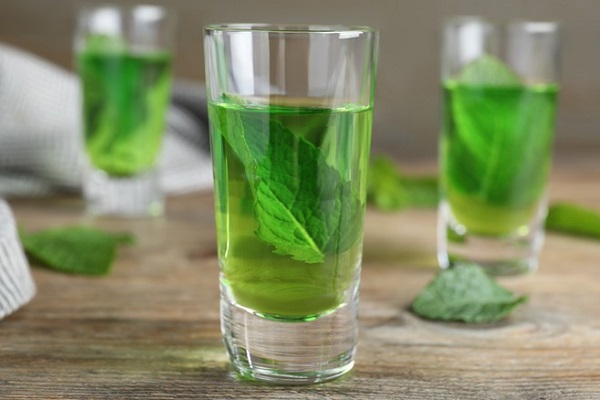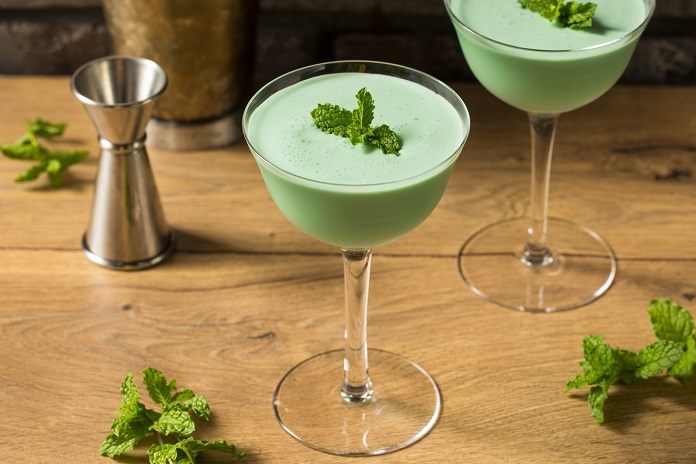On September 15 we celebrate National Creme De Menthen Day which means Mint cream in French a day to celebrate a fun occasion to enjoy this minty liqueur. Crème de Menthe is often used in cocktails and desserts, known for its refreshing flavour and green colour.
History of National Creme de Menthe Day
Previously, the liqueurs were tonics and curing potions. That’s how crème de menthe came into existence in the world. Did you know that, a French pharmacist named Emile Giffard studied the cooling and digestive qualities of mint? That led him to develop a recipe for crème de menthe in the year 1885.
However, Crème de menthe is sweet and steeping where dried peppermint or Corsican mint leaves in grain alcohol for weeks. After that, the leaves are what give it its green colour. After this, it goes with filtration and sugar is added. When it is extracted, it does not have any color and this is known as white crème de menthe.
However, Both varieties have a similar flavour profile and can be used interchangeably in recipes. Similarly, it can be used for several purposes such as a post-dinner drink, added to cocktails, food recipes, and more.
Did you know that, The most popular usage of this liqueur is in the cocktails Stringer and Grasshopper, which emerged between the 1890s to 1910s?
Over the many year, Crème de menthe has been featured in pop culture too. Some notable appearances include an episode of the sitcom “Friends” in the episode “The One with the Two Parties.” In an attempt to stop Leonard Green from running into his wife, Phoebe offers him a crème de menthe. Another appearance can be seen in the 12th episode of the first season of “Mad Men.”
| 1885 (Crème de Menthe as a Digestif) | Emile Giffard developed crème de menthe to be originally used as a digestif. |
| 1890s (The Stringer is Invented) | Another crème de menthe cocktail, the Stringer, is invented. |
| 1910s (The Grasshopper is Invented) | Philibert Guichet invents the Grasshopper cocktail in New York for a cocktail competition. |
| 1934 (Crème de Menthe Variation) | Sergei Rachmaninoff names the 24th variation of his piano piece on the Paganini theme the “crème de menthe variation.” |

Celebration Idea- National Creme de Menthe Day
- Cocktails: Try classic cocktails like the Grasshopper or Stinger, which use crème de menthe.
- Desserts: Incorporate it into desserts such as mint-chocolate brownies or a crème de menthe cheesecake.
- Mocktails: For a non-alcoholic twist, mix crème de menthe syrup with soda water or lemonade.
Receip- Classic Grasshopper Cocktail
Ingredients:
- 1 oz Crème de Menthe (green)
- 1 oz Crème de Cacao (white)
- 1 oz heavy cream
- Ice
- Mint leaves for garnish (optional)
How to make:
- Fill a cocktail shaker with ice.
- Add Crème de Menthe, Crème de Cacao, and heavy cream.
- Shake well until chilled and mixed.
- Strain into a chilled cocktail glass.
- Garnish with mint leaves if desired.
5 Interesting Facts About Crème De Menthe
-
Hercule Poirot’s favourite drink- Hercule Poirot, a popular character in Agatha Christie’s novels, has a strong affinity for flavored drinks, with crème de menthe being his preferred choice.
-
Different colors- Crème de menthe comes in two colors, green and white, and the former is colored with mint leaves or coloring if made from extract.
-
A great addition to coffee or tea- If added in a tiny amount such as half a teaspoon, it can add a nice mint flavor to your regular coffee or tea.
-
Enhances soda- Adding just about a quarter teaspoon of it to a glass of ice and soda will elevate the taste of the drink.
-
St. Patrick’s Day drink- Crème de menthe is a popular St. Patrick’s Day drink because of its green colour.
Conclusion
FAQs
What is Crème de Menthe?
Crème de Menthe is a mint-flavoured liqueur that can be either green or clear. It has a sweet, refreshing taste and is often used in cocktails and desserts.
How is Crème de Menthe made?
Crème de Menthe is made by infusing mint leaves in alcohol, then sweetening the mixture and adding additional flavourings if needed. The green colour is typically achieved with food colouring, although some versions are clear.
What cocktails can I make with Crème de Menthe?
Popular cocktails include the Grasshopper, Stinger, and Peppermint Martini. You can also use it in a variety of other drinks for a minty twist.
What are some dessert recipes that use Crème de Menthe?
Crème de Menthe can be used in recipes like mint chocolate chip ice cream, crème de menthe brownies, and mint chocolate cheesecake.
Is there a non-alcoholic alternative to Crème de Menthe?
Yes, there are mint syrups and extracts that can be used as substitutes in recipes if you prefer a non-alcoholic option.
